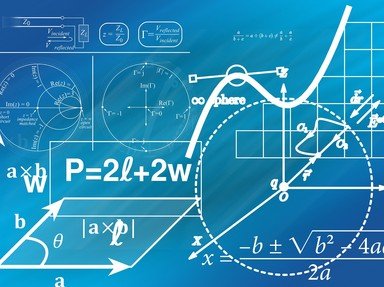Quiz Answer Key and Fun Facts
1. The formal definition of a relation R on a specified set S is a set of ordered pairs of elements of S. R is a relation on set S such that for all a, b, c in S if (a,b) is in R and (b,c) is in R then (a,c) is in R. What term is applied to such a relation?
2. Let S be the set of subsets of points in the Cartesian plane. The relation "is congruent to" defined on ordered pairs of elements of S exemplifies an important type of relation. What is such a relation called?
3. The relation "is the (full) sibling of" defined on the set of living human beings at a prespecified instant of time is
4. The relation "has exactly the same first name as" defined on the set of living human beings at a prespecified instant of time is
5. Someone reasons as follows: if a relation R defined on a set S is both symmetric and transitive, then it must be reflexive. They reason that for all x and y in S, xRy implies yRx by symmetry. Further, if xRy and yRx, then xRx by transitivity. Thus they conclude that we have reflexivity.
6. A function on a specified set S is a relation R on S such that for all a,b,c in S, if (a,b) and (a,c) are in R, then b = c. The relation R is defined on the set of real numbers by "xRy if and only if x is the square of y".
7. The relation "speaks all the same languages, and no others, as" defined on the set of living human beings at a pre-specified instant of time.
8. The relation "speaks at least one common language with" defined on the set of all human beings living at a prespecified instant of time is
9. The relation "is in love with" defined on the set of all human beings living at a prespecified instant of time is
10. On the set of all living human beings at a prespecified instant of time we define the relation R by "xRy if and only if x and y have the same biological father" and R' by "xR'y if and only if x and y have the same biological mother".
Source: Author
GammaRho
This quiz was reviewed by FunTrivia editor
crisw before going online.
Any errors found in FunTrivia content are routinely corrected through our feedback system.
